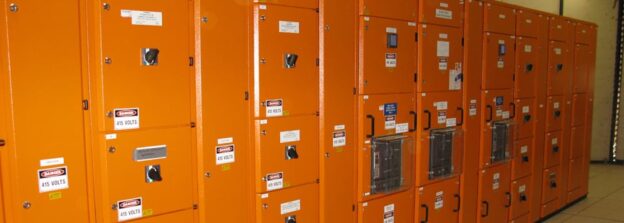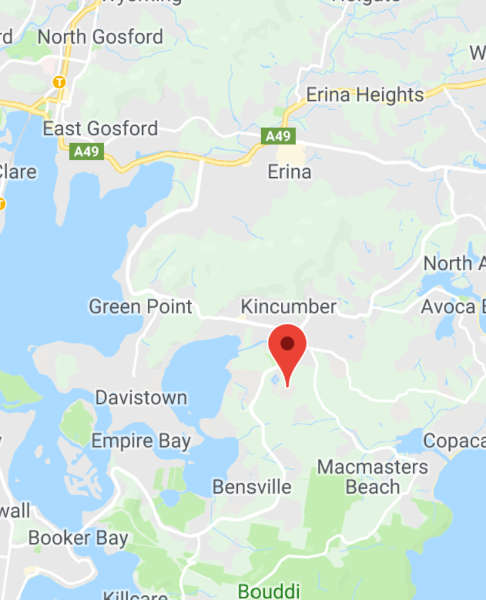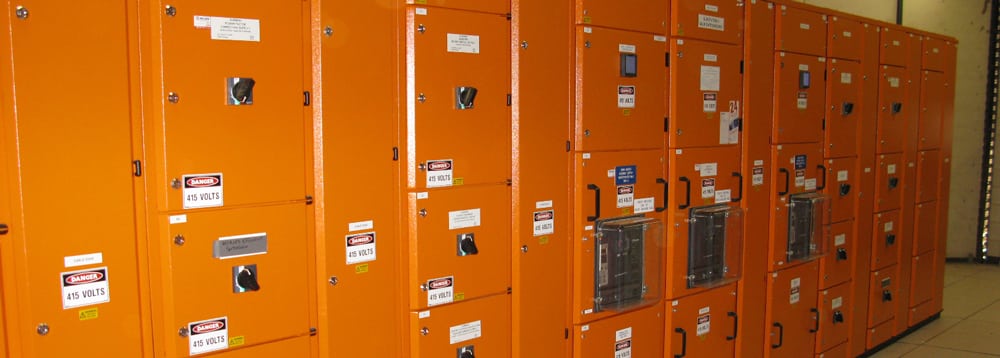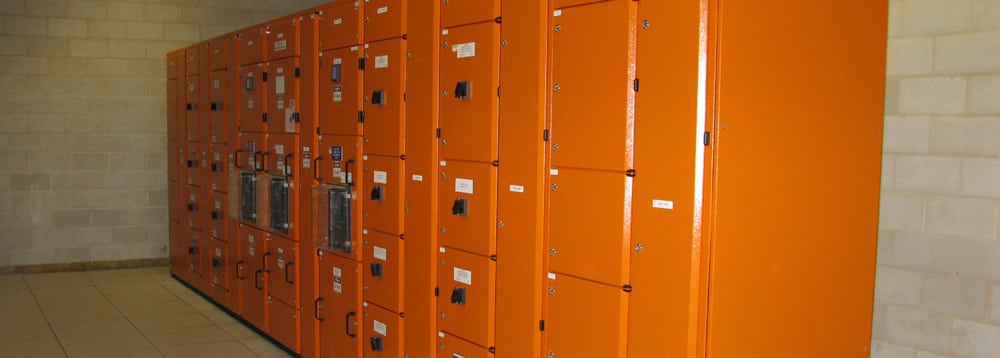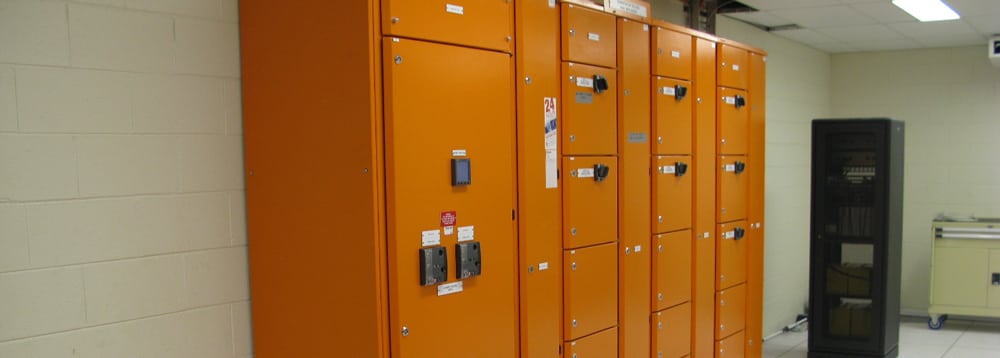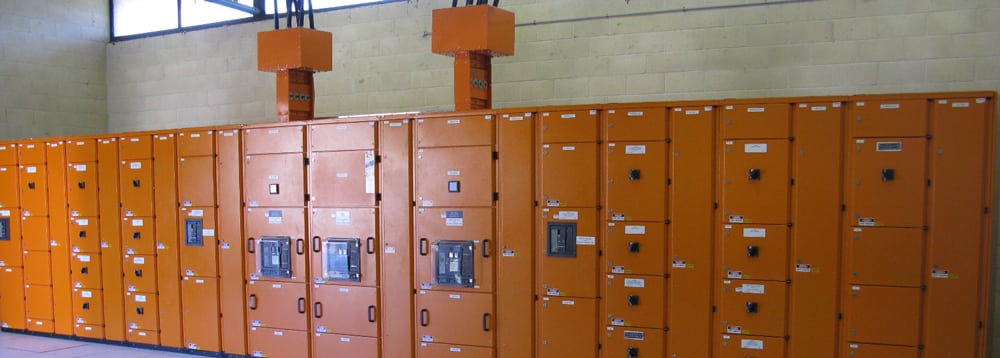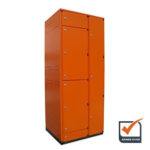Electrical power is provided to the treatment plant site by two (2) Ausgrid high voltage (11,000 Volt) supplies. Normally both supplies provide power but each supply is capable of supplying the load in the event of loss of one of the supplies.
The site has two (2) electrical substations, Substation No.1 and Substation No.2, which transform the high voltage to the normal 415/240V supply which powers all of the light and power and the electrical motors, pumps and controls. Both of these substations have been supplying power from the commencement of operation of the treatment plant in 1986 and both substations are currently in the process of being upgraded with respect to the transformers, main switchboards and the control and monitoring equipment. As stated earlier, this information paper will focus on the replacement of the Substation No.2 main 415 Volt switchboard.
Substation No.2 Main 415 Volt Switchboard Replacement Switchboard Design and Manufacture
The main switchboard in Substation No.2 distributes power to the various pumps and motors and to the instrumentation and control systems which are associated with the sewage treatment process. In fact this switchboard supplies approximately 85% of the electrical power consumed in the operation of the sewage treatment plant. This recently constructed and installed main switchboard replaces the 30 year old original main switchboard.
The new switchboard was designed “in-house” by Council’s electrical personnel. From start to finish the design and reviewing process took around 6 months. The switchboard has been designed to have power supply from 2 transformers with each transformer being supplied from separate Ausgrid high voltage power supplies. This ensures that the treatment plant will continue to function if 1 Ausgrid supply is lost. The switchboard is designed to run with the 2 power supplies but if one fails then the switchboard will automatically connect to the good power supply. The new switchboard will meet the treatment plant load requirements up to 2050.
Some of the criteria that the switchboard design had to meet were:
- The switchboard had to be large enough to accommodate all existing loads and have space and power in reserve to handle future treatment plant expansion.
- Some cables used to distribute the power are large (in excess of 40mm in diameter and weighing up to 6.3kg/m) and very rigid. Cable access was important in the design of the switchboard.
- The switchboard had to fit into the existing switchroom and meet WHS requirements.
Some of the significant details of the completed switchboard are as follows:
- The switchboard is nearly 11 metres long, 800mm deep and 2.3 metres high. So that the switchboard could be accommodated in the manufacturers workshop and to facilitate installation, the switchboard was constructed in 3 sections. The total weight of the switchboard is approximately 7 Tonnes with the centre section (which contains the large switches and busbar) weighing approximately 3 Tonnes.
- Approximately 2,700kg of copper busbar is used to distribute the power within the switchboard. This is approximately the weight of a Toyota Landcruiser or 2 Hyundai I30’s. The cost of the busbar alone was approximately $30,000.
- The switchboard is capable of supplying 6,400 Amps which is sufficient power to supply around 130 medium sized houses.
- To make the operation of the switchboard as safe as possible for the operators, each large circuit breaker (switch) is turned “ON” or “OFF” from a remote switching panel located approximately 10 metres from the actual circuit breakers. This means that in the event of a fault and possible explosion occurring during the operation of the circuit breakers, the operator is well clear. Other measures taken to minimise the possibility of injury during operation and/or maintenance of the switchboard include insulating shrouds covering “live” parts and extensive labelling.
- The operation of the switchboard is automatic with respect to power supply. This means that if one of the two power supplies is lost, the system automatically switches to the good supply minimising the duration of site power loss. Operators no longer have to attend the site to change over the power which is a good feature for after hours power failures.
- Provision has been made for the future connection of Cogeneration equipment which will use the sewage gas generated from the treatment process to power a generator to generate electricity whilst the exhaust temperature of the generator will be used to heat the sludge in the digesters.
Quotations for the construction and installation of the switchboard were invited via the recently established Panel of Providers (formed from a Tender) which is a panel of 12 pre-registered contractors who have been approved by Council to manufacture switchboards.
The successful tenderer for this project was a Kincumber company Glendon Electrical Engineering Services Pty Ltd who manufacture in Kincumber (less than 1km from the treatment plant site) and have around 6-8 staff.
The switchboard comprises 11 tiers or modules of equipment with each module being up to 1 metre wide. The individual sheet steel modules were made and assembled in Australia by B&R Enclosures in Brisbane and transported to Kincumber. Glendon Electrical supplied and installed all of the busbar and equipment in the modules and joined the modules to make the complete main switchboard. Glendon Electrical also mounted and commissioned the switchboard.
The cost of the completed switchboard was approximately $250,000.
Switchboard Installation
Some of the significant issues that needed to be considered in the installation phase were:
As the switchboard was to be installed level with the computer type access floor some 600mm above the concrete subfloor, a steel support frame had to be designed and bolted to the concrete to support the switchboard at computer floor level. As well as supporting the switchboard, the support frame had to allow access into the switchboard for large cables with very limited flexibility.
Due to the weight of the switchboard sections, crane access to a point as near as possible to the final location was important. The switchboard was manufactured in three sections which helped in the installation process.
The recently installed computer type access floor loading capability had to be taken into account as the switchboard sections had to be rolled across the floor to their final location. As previously stated, the heaviest section weighed 3 Tonnes so 25mm plywood was placed on the access floor to spread the weight across the floor panels.
Maintaining power supply to the sewage treatment works processes during transfer of around 60 large cables from the old switchboard to the new was vital. The fact that critical areas of process have two power supplies assisted in maintaining the power to individual areas.
The possibility of losing one of the two Ausgrid power supplies during the transfer of cables and having a “Plan B” should this occur.
One of the more difficult tasks following the installation of the new switchboard was the transfer of the power supply cables that supply power to the aeration system. This involved disconnecting at the old switchboard and pulling 32 cables, each of nearly 40mm in diameter and weighing 5kg per metre, out of the building and back in to the new switchboard and re-connecting.
Time/Cost
The contract for the manufacture of the new switchboard was awarded late July, 2014 with completion of installation being achieved mid March, 2015. The total cost of the contract works is estimated at $320,000 with an average of around 6 mainly local workers being employed on the project for the manufacture and installation period.
Based upon the performance of the previous switchboard, it is expected that this new switchboard will serve Council to at least 2050.
Case study written and prepared by Gosford City Council. Published with permission by B&R Enclosures

